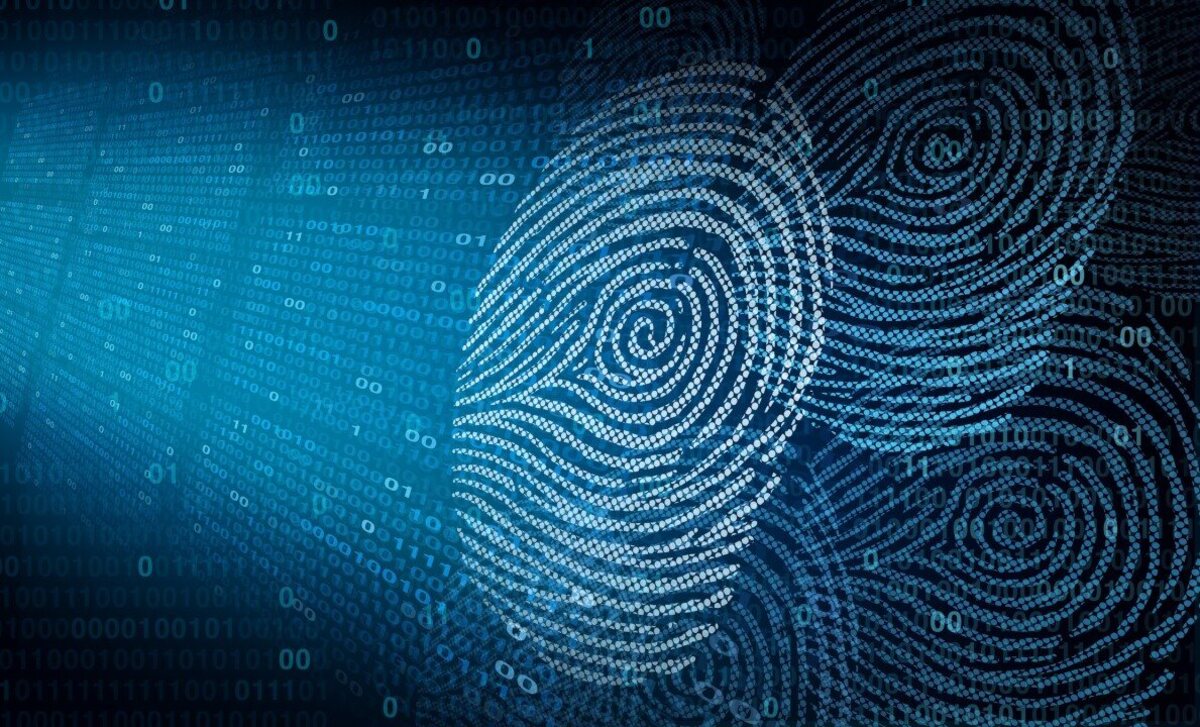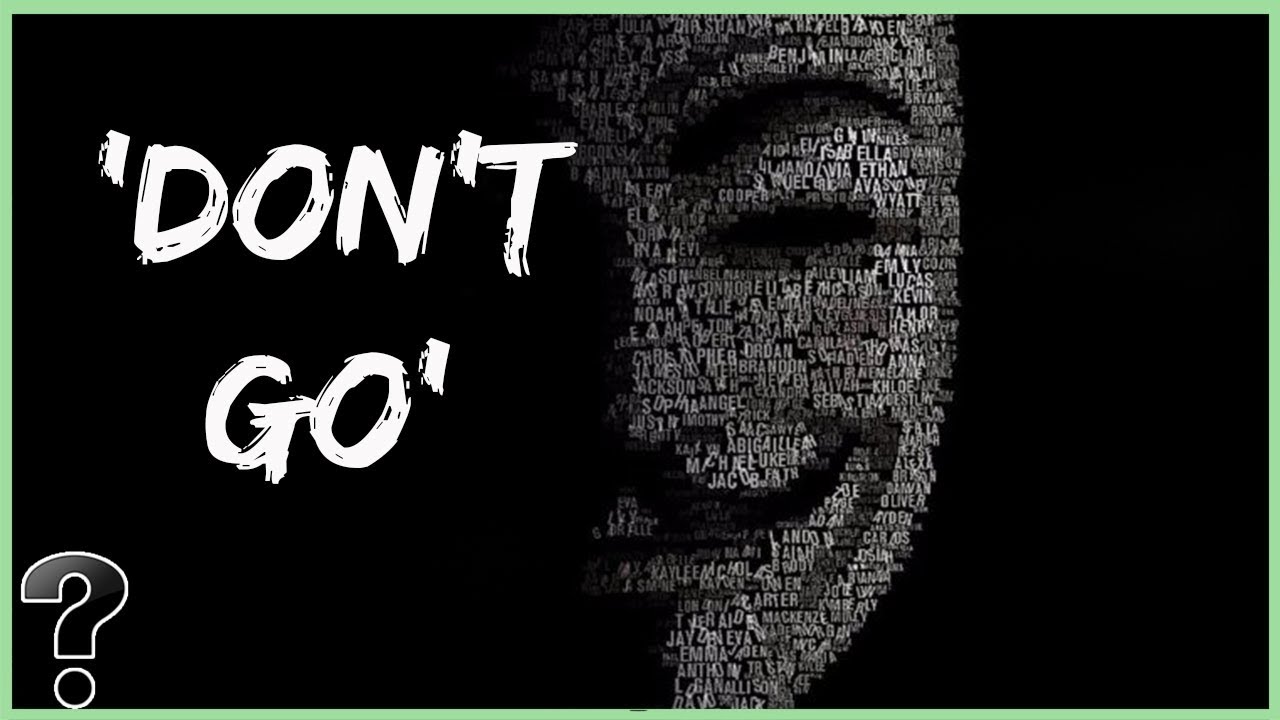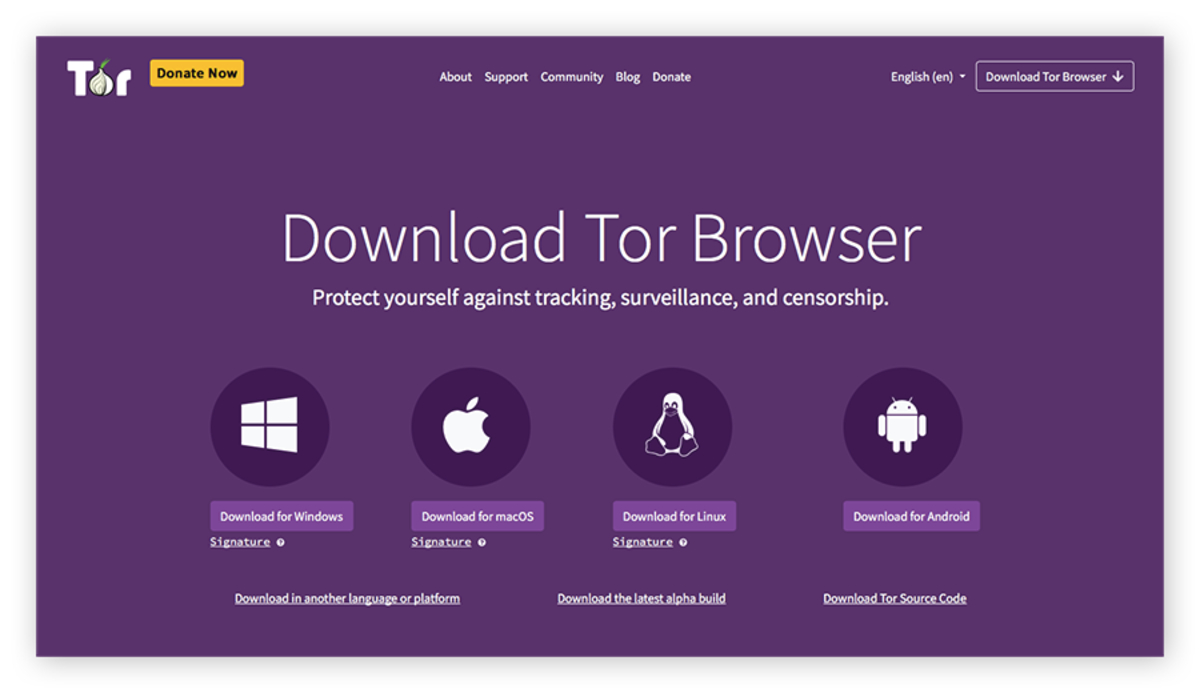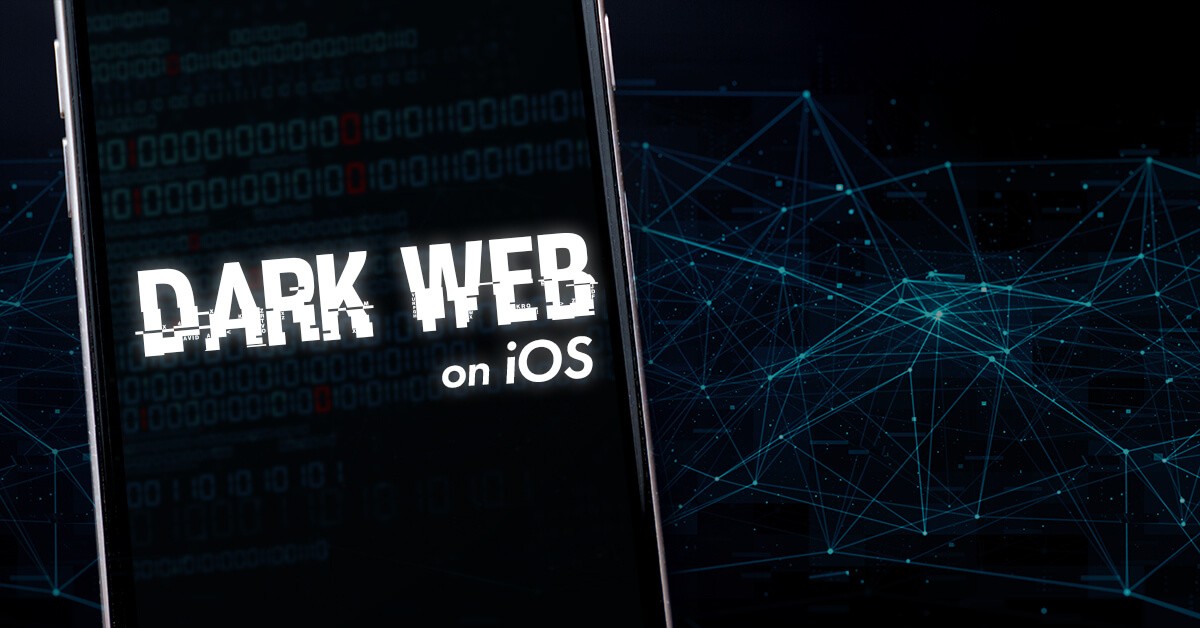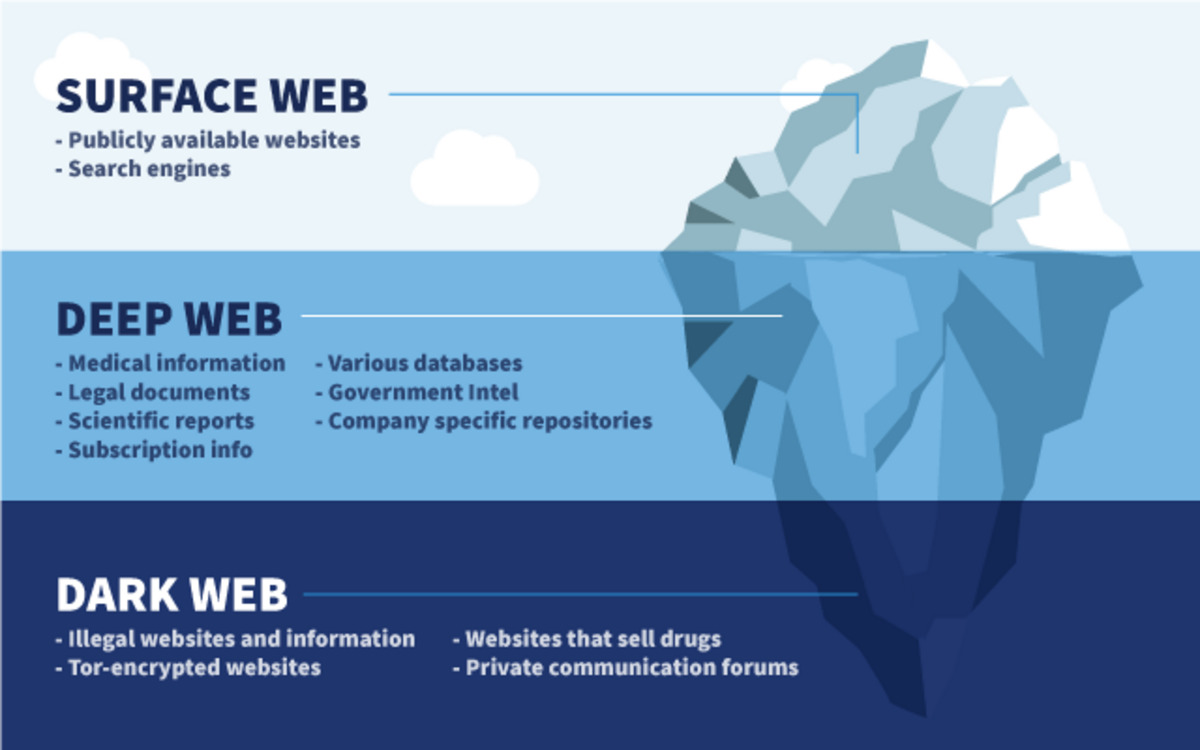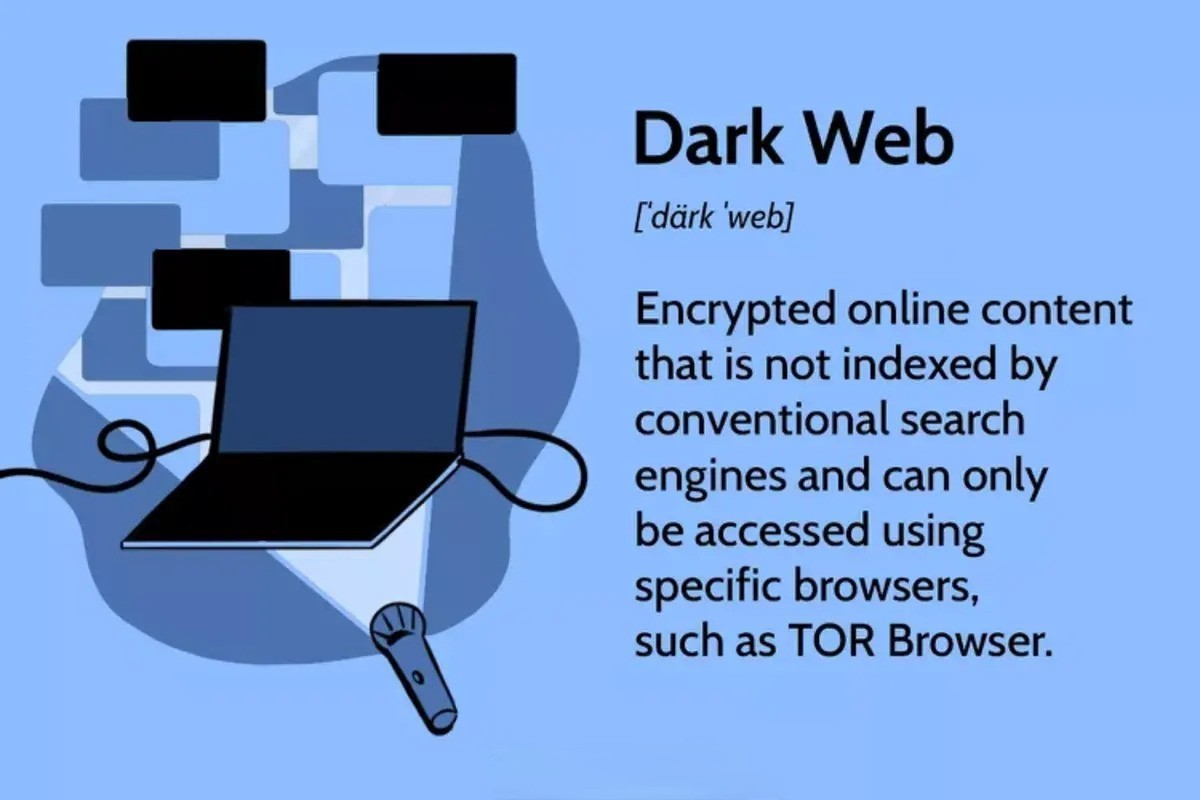Introduction
Welcome to the dark underbelly of the internet – the Dark Web. It’s a hidden ecosystem that operates anonymously, beyond the reach of search engines and regular web browsers. While the surface web is easily accessible by anyone, the Dark Web requires specialized software and knowledge to navigate. It’s a breeding ground for illegal activities, such as the buying and selling of drugs, counterfeit goods, and stolen information.
In recent years, the alarmingly increasing number of data breaches has led to a surge in stolen information being traded on the Dark Web. This should serve as a wakeup call for individuals to take proactive measures to protect their personal information from falling into the wrong hands. In this article, we will explore various steps you can take to safeguard your information and minimize the risk of becoming a victim of identity theft.
Understanding the mechanisms and risks associated with the Dark Web is crucial. Hackers and cybercriminals can easily sell and trade stolen information on underground marketplaces, making it accessible to criminals who can use it for malicious purposes. From financial credentials to personal identification, no piece of information is off-limits in the world of illicit online activities.
This article will guide you through the process of assessing the risk level of your personal information being on the Dark Web, identifying if your data has been compromised, and taking appropriate steps to remove it. We will also discuss how to work with law enforcement, adopt secure online practices, manage your online credentials, monitor your financial accounts, and protect your personal information on various online platforms.
Keep in mind that while no security measure is foolproof, being proactive and implementing these measures can significantly reduce the likelihood of your personal information being misused. So, don’t wait until it’s too late; let’s dive into the world of the Dark Web and equip ourselves with the necessary knowledge to protect our digital identities.
Understanding the Dark Web
The Dark Web, also known as the Darknet, is a hidden layer of the internet that requires specific software and configurations to access. While it is often associated with illegal activities, such as drug trafficking and weapon sales, it’s essential to note that not everything taking place on the Dark Web is illegal. It serves as a platform for individuals to communicate and share information anonymously, away from the prying eyes of surveillance and censorship.
One of the key technologies that enable the existence of the Dark Web is The Onion Router (TOR). TOR uses a network of servers operated by volunteers worldwide to anonymize internet traffic. When accessing websites on the Tor network, your IP address and identity are concealed, providing a higher level of privacy and security.
Within the Dark Web, you will find various marketplaces where individuals can buy and sell goods and services, often accepting cryptocurrencies like Bitcoin to maintain anonymity. These marketplaces range from legitimate platforms offering legal products to illicit sites selling stolen information, malware, and hacking tools.
The anonymity and encryption offered by the Dark Web make it an attractive space for criminals to conduct illegal activities. Stolen information is a highly sought-after commodity in these underground marketplaces. Hackers and other cybercriminals sell personal data, credit card information, login credentials, and other sensitive details on these platforms, which can then be used for identity theft, fraud, or other nefarious purposes.
It’s important to understand that the Dark Web operates separately from the surface web, which is the part of the internet accessible through regular search engines like Google. While you might stumble upon shady websites or encounter cybercriminals on the surface web, the Dark Web operates on a different level of anonymity and illegality.
While navigating the Dark Web is not recommended for the average internet user due to the potential risks and illegal activities, understanding its existence is vital to recognize the threats and take appropriate measures to protect your personal information. By securing your online presence and being cautious about the websites you visit and the information you share, you can minimize the risk of falling victim to cybercriminals operating in the Dark Web.
Assessing the Risk
Assessing the risk of having your personal information on the Dark Web is an essential step in protecting yourself from potential identity theft and fraud. While it’s impossible to guarantee complete safety, understanding the level of risk can help you take appropriate actions to mitigate any potential damage. Here are some key factors to consider when assessing the risk:
- Data Breaches: Review any past data breaches that may have included your personal information. Stay updated with news about major breaches and check if your email address, username, or password has ever been compromised.
- Online Accounts: Evaluate the security measures in place for your online accounts, such as strong passwords, multi-factor authentication, and regular updates. The stronger your security, the less likely your information will end up on the Dark Web.
- Online Activities: Consider the websites you visit and the information you share. Be mindful of phishing attempts, suspicious links, and malicious websites that may try to steal your information or install malware on your device.
- Financial Transactions: Review your online banking and credit card statements regularly for any unauthorized charges or suspicious activities. Be cautious while making financial transactions online to minimize the risk of your financial information being compromised.
- Social Engineering: Be vigilant and skeptical of unsolicited emails, phone calls, or messages asking for your personal information. Cybercriminals often use social engineering tactics to trick individuals into revealing sensitive information.
To assess whether your personal information is already on the Dark Web, you can use specialized services or tools that monitor and scan the Dark Web for stolen data. These services search for any mentions of your email address, usernames, or other identifiable information in underground forums and marketplaces. If any compromised data is detected, it’s crucial to take immediate action to minimize the impact.
Remember, assessing the risk associated with the Dark Web is an ongoing process. As the cyber threat landscape evolves, new risks and vulnerabilities may emerge. Stay informed about the latest security practices, update your passwords regularly, and follow guidelines provided by cybersecurity experts to keep your information as secure as possible.
Identifying Stolen Information
Identifying whether your personal information has been stolen and is circulating on the Dark Web can help you take immediate action to protect yourself from potential harm. Here are some steps you can take to identify stolen information:
- Data Breach Notifications: Stay alert for any data breach notifications from companies or organizations that you have an account with. These notifications inform you if your information has been compromised in a specific incident. Take these alerts seriously and follow the recommended steps to secure your accounts.
- Dark Web Monitoring: Utilize tools and services that monitor the Dark Web for mentions of your personal information. These tools scan underground forums, marketplaces, and other platforms to identify if your personal data, such as usernames, passwords, or social security numbers, are being bought or sold.
- Identity Theft Protection Services: Consider subscribing to identity theft protection services. These services continually monitor various sources, including the Dark Web, for any signs of your personal information being compromised. If any suspicious activities or mentions are detected, you will be alerted immediately.
- Credit Monitoring: Regularly check your credit reports from major credit bureaus. Look for any unauthorized accounts, inquiries, or changes in your credit history that could indicate identity theft. If you notice any discrepancies, report them to the credit bureaus and take steps to secure your identity.
- Unfamiliar Activity: Pay attention to any unfamiliar activity on your financial accounts, such as unauthorized transactions or changes to your personal information. Be vigilant and report any suspicious activity to your financial institution immediately.
If you discover that your personal information has been compromised and is circulating on the Dark Web, it’s crucial to take swift action to protect yourself. Here’s what you can do:
- Change Passwords: Immediately change the passwords for any compromised accounts. Ensure that the new passwords are strong, unique, and not used for any other accounts.
- Enable Two-Factor Authentication: Enable two-factor authentication (2FA) for your online accounts whenever possible. This extra layer of security helps prevent unauthorized access to your accounts, even if your passwords are compromised.
- Inform Financial Institutions: Contact your bank, credit card companies, and any other financial institutions to inform them about the potential compromise. They can monitor your accounts for any suspicious activities and take appropriate actions to protect your finances.
- File a Report: Report the incident to your local law enforcement agency and provide them with any evidence or information you have regarding the stolen information. This will help authorities in their efforts to investigate and prevent further criminal activity.
By actively monitoring and identifying stolen information, you can take immediate steps to prevent further harm and minimize the potential impact of identity theft on your personal and financial well-being.
Working with Law Enforcement
If you have identified that your personal information is on the Dark Web or suspect that you are a victim of cybercrime, it is important to involve law enforcement authorities to aid in the investigation and potential prosecution of the criminals involved. Here are some steps you can take when working with law enforcement:
- Report the Incident: Contact your local law enforcement agency and file a report detailing the incident and providing any evidence or information you have gathered. Provide them with as much information as possible, including the nature of the crime, the scope of the impact, and any potential leads you may have.
- Cooperate Fully: Collaborate with law enforcement authorities throughout the investigation process. Be prepared to answer questions, provide additional information, or assist in any way needed to help them understand the magnitude of the crime and identify the perpetrators.
- Keep Documentation: Maintain a record of all communication and documents related to the incident. This includes incident reports, case numbers, emails, and any other correspondence with law enforcement. These records will be essential for future reference and in the event of any follow-up investigations or legal proceedings.
- Follow Legal Advice: Consult legal professionals or law enforcement officials for guidance on the best course of action. They can provide you with information on your rights, advise you on potential legal actions you can take, and help you navigate the complex process of dealing with cybercrime.
- Be Patient: Understand that investigations take time. Law enforcement agencies need to gather evidence, analyze data, and collaborate with other agencies or organizations. It is crucial to remain patient and confident in their ability to handle the case professionally.
It is essential to note that working with law enforcement in cases involving the Dark Web can be complex due to jurisdictional and technological challenges. The criminals operating within the hidden layers of the internet often take advantage of the anonymity and encryption provided by the Dark Web. However, by reporting the incident and cooperating fully with law enforcement, you are contributing to the broader efforts of combating cybercrime and helping protect others from falling victim to similar acts.
Keep in mind that prevention is key. Educating yourself about online security, adopting best practices, and being vigilant in protecting your information can go a long way in reducing the risk of becoming a victim. However, if you do find yourself a target, do not hesitate to involve law enforcement and assist them in their efforts to bring cybercriminals to justice.
Secure Online Practices
Implementing secure online practices is crucial in protecting your personal information from ending up on the Dark Web. By following these best practices, you can significantly reduce the risk of falling victim to cybercrime:
- Strong and Unique Passwords: Create strong, unique passwords for each of your online accounts. Use a combination of uppercase and lowercase letters, numbers, and special characters. Avoid using easily guessable information such as birthdays or names.
- Enable Two-Factor Authentication: Enable two-factor authentication (2FA) whenever possible. 2FA adds an extra layer of security by requiring a second verification step, such as a unique code sent to your mobile device, in addition to your password.
- Beware of Phishing Attempts: Be cautious of suspicious emails, links, and attachments. Avoid clicking on email links from unknown sources or providing personal information on unfamiliar websites. Legitimate organizations will not ask for sensitive data through email.
- Keep Software Up to Date: Regularly update your operating system, web browsers, and other software to ensure you have the latest security patches. Outdated software may have vulnerabilities that cybercriminals can exploit.
- Use Secure Wi-Fi Networks: Avoid connecting to unsecured or public Wi-Fi networks, especially when accessing sensitive information or making financial transactions. Use a virtual private network (VPN) to encrypt your connection and protect your data.
- Regularly Back Up Your Data: Make regular backups of important files and documents. In the event of a data breach or ransomware attack, having backups ensures you can restore your data without having to pay a ransom.
- Be Mindful of Social Media: Be cautious about the information you share on social media platforms. Avoid revealing personal details, travel plans, or financial information that could be used by cybercriminals to target you.
- Secure Your Devices: Protect your devices with strong passwords or biometric authentication. Enable automatic screen lock after a period of inactivity and consider using encryption to secure your data.
- Regularly Monitor Your Accounts: Keep a close eye on your financial accounts, credit reports, and online transactions. Report any suspicious activity or unauthorized charges to your financial institution immediately.
By incorporating these secure online practices into your digital routine, you can significantly reduce the risk of your personal information ending up on the Dark Web or falling into the hands of cybercriminals. Remember, online security is an ongoing effort, and staying informed about the latest security threats and best practices is essential to keep your information safe.
Managing Online Credentials
Managing your online credentials effectively is crucial to prevent your personal information from being compromised and landing on the Dark Web. Here are some best practices to follow when it comes to managing your online credentials:
- Unique Passwords: Use a unique password for each of your online accounts. Reusing the same password across multiple platforms increases the risk of multiple accounts being compromised if one password is exposed.
- Password Complexity: Create strong passwords that are difficult for others to guess. Use a combination of uppercase and lowercase letters, numbers, and special characters. Avoid using easily guessable information such as names or birthdates.
- Password Managers: Consider using a password manager tool to securely store and manage your passwords. Password managers generate complex passwords for you and remember them, so you don’t have to rely on your memory or write them down.
- Multi-Factor Authentication: Enable multi-factor authentication (MFA) whenever possible. This adds an extra layer of security by requiring a second form of verification, such as a fingerprint scan or a unique code sent to your mobile device, in addition to your password.
- Regularly Update Passwords: Regularly update your passwords, especially for sensitive accounts like banking or email. Aim to update them at least every three to six months, or immediately if you suspect any security breach.
- Phishing Awareness: Be cautious of phishing attempts that aim to trick you into revealing your credentials. Avoid clicking on suspicious links in emails, messages, or pop-up windows, and verify the legitimacy of websites before entering your login information.
- Secure Communications: When accessing online accounts, ensure that the website is using a secure connection (HTTPS) rather than an unencrypted one (HTTP). Secure connections encrypt the data transmitted between your device and the website, protecting your credentials from interception.
- Account Recovery: Set up account recovery options, such as alternate email addresses or phone numbers, to ensure that you can regain access to your accounts if you ever forget your password or get locked out.
- Account Deactivation: When you no longer use an online account, deactivate or delete it if possible. This minimizes the chances of a cybercriminal gaining access to old accounts and compromising your personal information.
Adhering to these practices will significantly enhance the security of your online credentials and reduce the risk of your personal information being exposed on the Dark Web. Remember to stay vigilant and regularly review and update your online security measures.
Monitoring Financial Accounts
Monitoring your financial accounts regularly is crucial for detecting any suspicious activities and preventing your sensitive information from ending up on the Dark Web. Here are some steps to effectively monitor your financial accounts:
- Regularly Review Statements: Take the time to review your bank statements, credit card statements, and other financial account statements on a regular basis. Look for any unfamiliar transactions or charges that you did not authorize.
- Set Up Account Alerts: Utilize account alert features provided by your financial institutions. These alerts can notify you via email or text message of any suspicious activities, large transactions, or changes to your account information.
- Monitor Credit Reports: Obtain and review your credit reports from major credit bureaus periodically. Look for any new accounts, inquiries, or other changes that could indicate fraudulent activity. Understanding your credit history is crucial for identifying potential unauthorized accounts opened in your name.
- Utilize Fraud Protection Services: Consider enrolling in fraud protection services offered by your financial institution or third-party providers. These services can help monitor your accounts for any signs of fraudulent activity and provide assistance in resolving identity theft issues.
- Report Suspicious Activity: If you notice any unauthorized transactions or suspicious activities on your accounts, contact your financial institution immediately. They can guide you on the steps to take, freeze your accounts if necessary, and launch an investigation.
- Secure Online Transactions: When conducting financial transactions online, make sure you are using secure websites with encrypted connections (HTTPS). Avoid entering your payment information on websites that do not have proper security measures in place.
- Protect Personal Identification Numbers (PINs): Keep your PINs secure and avoid sharing them with anyone. Choose unique and non-obvious PINs for your accounts to reduce the risk of them being easily guessed or compromised.
- Review Privacy Settings: Regularly review and update the privacy settings on your financial accounts to ensure that only necessary information is shared. Limit the amount of personal information accessible to external parties.
- Monitor Online Payment Systems: If you use online payment systems or digital wallets, regularly review your transaction history and account details. Report any unauthorized transactions or suspicious activities to the respective platform’s customer support.
By actively monitoring your financial accounts, you can detect any unauthorized activities or potential security breaches promptly. This proactive approach gives you the opportunity to take immediate action, minimize potential losses, and protect your personal and financial information from ending up on the Dark Web.
Protecting Personal Information
Protecting your personal information is essential in preventing it from falling into the wrong hands and potentially ending up on the Dark Web. Here are some important steps to take to safeguard your personal information:
- Limit Personal Information Sharing: Be cautious about the information you share online and offline. Only provide personal details when necessary, and avoid sharing sensitive information on social media platforms, public forums, or unsecured websites.
- Secure Your Devices: Use strong passwords, PINs, or biometric authentication to secure your smartphones, computers, and other digital devices. Encrypt your data and enable remote wiping capabilities in case your device is lost or stolen.
- Be Cautious of Unsolicited Requests: Be skeptical of unsolicited requests for personal information, whether it’s through phone calls, emails, or messages. Legitimate organizations will not ask for sensitive information unless it is part of a trusted transaction or verification process.
- Protect Your Social Security Number: Safeguard your social security number and only disclose it when absolutely necessary. Avoid carrying your social security card in your wallet or purse, and never share it through insecure channels.
- Use Secure Wi-Fi Networks: Be cautious when connecting to public Wi-Fi networks, as they can be vulnerable to hackers. Use a virtual private network (VPN) or cellular data connection to encrypt your internet traffic and protect your personal information.
- Be Wary of Phishing Attacks: Educate yourself about phishing attacks and how to recognize and avoid them. Be cautious of suspicious emails, links, and attachments that may attempt to trick you into revealing your personal information.
- Secure Physical Documents: Keep physical documents that contain personal information, such as passports, social security cards, and financial statements, in a secure and locked place. Shred documents before disposing of them to prevent unauthorized access.
- Regularly Update Privacy Settings: Review and adjust the privacy settings for your online accounts and social media profiles. Limit the amount of personal information visible to the public and only share with trusted individuals or organizations.
- Securely Dispose of Electronics: When getting rid of old electronic devices, ensure that all personal information is properly erased. Factory reset or use data erasing tools to wipe your devices clean before recycling, selling, or donating them.
- Stay Informed: Stay updated on the latest security practices and emerging threats. Be proactive in educating yourself about cybersecurity and take necessary precautions to protect your personal information.
By implementing these measures, you can significantly reduce the risk of your personal information being compromised and prevent it from being exposed on the Dark Web. Remember, protecting your personal information is an ongoing process, and staying vigilant is key to maintaining your privacy and online security.
Using Identity Theft Protection Services
Identity theft protection services provide an added layer of security when it comes to safeguarding your personal information and preventing it from being exploited on the Dark Web. These services offer various features and benefits to help detect and mitigate identity theft risks. Here’s how identity theft protection services can help:
- Identity Monitoring: Identity theft protection services continuously monitor various sources, including the Dark Web, for any signs of your personal information being compromised. They can alert you if any suspicious activities, such as the buying or selling of your personal data, are detected.
- Credit Monitoring: These services also monitor your credit reports and notify you of any significant changes, such as new accounts being opened or inquiries made in your name. Timely alerts can help you identify and address fraudulent activities before they escalate.
- Identity Restoration Assistance: In the unfortunate event of identity theft, these services often provide dedicated support to guide you through the process of restoring your identity. They can assist you in reporting fraudulent activities, disputing unauthorized transactions, and liaising with credit bureaus, financial institutions, and law enforcement agencies.
- Lost Wallet Protection: Identity theft protection services may offer assistance in the event that your wallet or purse is lost or stolen. This can include canceling and reissuing credit cards, driver’s licenses, and other identification documents to minimize the risk of identity theft.
- Dark Web Monitoring: Many identity theft protection services scan the Dark Web to uncover any mentions of your personal information, such as email addresses, usernames, or social security numbers. If your data is found, they will alert you and provide guidance on the necessary steps to protect your identity.
- Security Education Resources: These services often provide educational resources and tips on how to enhance your online security. They may offer guidance on creating strong passwords, practicing safe browsing habits, and recognizing common scams and phishing attempts.
- Family Protection: Some identity theft protection services extend their coverage to include family members, protecting their personal information as well. This can provide peace of mind knowing that your loved ones’ identities are also being monitored and safeguarded.
When considering an identity theft protection service, it is important to research and choose a reputable provider. Look for services that offer comprehensive monitoring, timely alerts, and dedicated support in case of identity theft. Evaluate the features and pricing plans to determine which option best suits your needs.
While identity theft protection services can provide valuable assistance in detecting and mitigating identity theft risks, it’s important to note that they do not guarantee complete protection. It is essential to complement these services with your own proactive security measures, such as practicing safe online habits, securing your devices, and monitoring your financial accounts regularly.
The combination of personal vigilance and using reputable identity theft protection services can help minimize the risk of your personal information ending up on the Dark Web and provide you with the peace of mind of having an extra layer of protection against identity theft.
Conclusion
Protecting your personal information from ending up on the Dark Web is an ongoing endeavor that requires vigilance, awareness, and proactive measures. The hidden world of the Dark Web presents numerous risks, and the increasing number of data breaches serve as a reminder of the importance of securing our digital identities.
Understanding the mechanisms of the Dark Web, assessing the risk level of your personal information, and identifying stolen data are vital steps in protecting yourself from potential identity theft and fraud. Working with law enforcement authorities can aid in investigating cybercrimes and bringing perpetrators to justice.
Implementing secure online practices, managing your online credentials effectively, monitoring your financial accounts, and protecting your personal information are crucial in minimizing the risk of ending up on the Dark Web. Utilizing identity theft protection services can provide an added layer of security and assistance in detecting and mitigating identity theft risks.
Remember, no security measure is foolproof, and the landscape of cyber threats is ever-evolving. Staying informed about the latest security practices, keeping software and devices updated, and practicing caution when sharing personal information are essential in maintaining your online security.
By adopting a proactive approach and implementing the recommended measures, you can significantly reduce the risk of your personal information being compromised on the Dark Web. Guarding your information not only protects your digital identity but also helps maintain your financial well-being and overall peace of mind.







